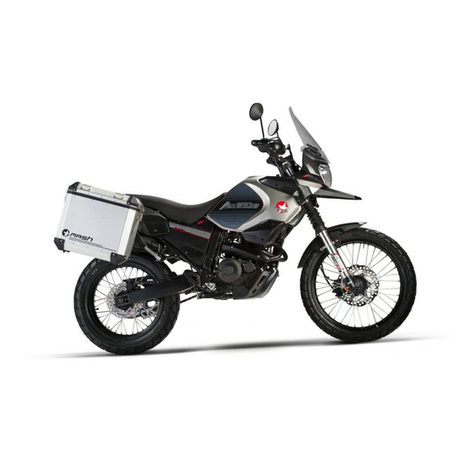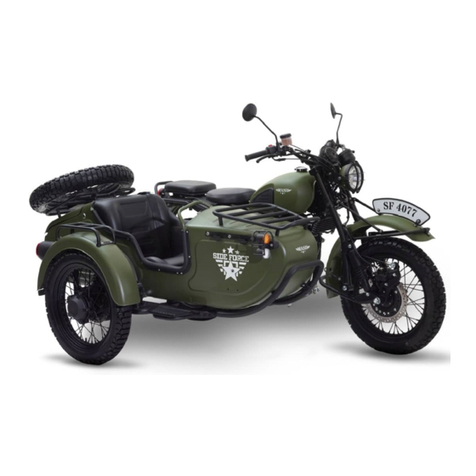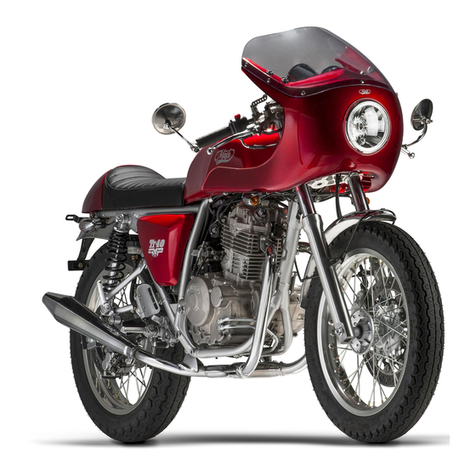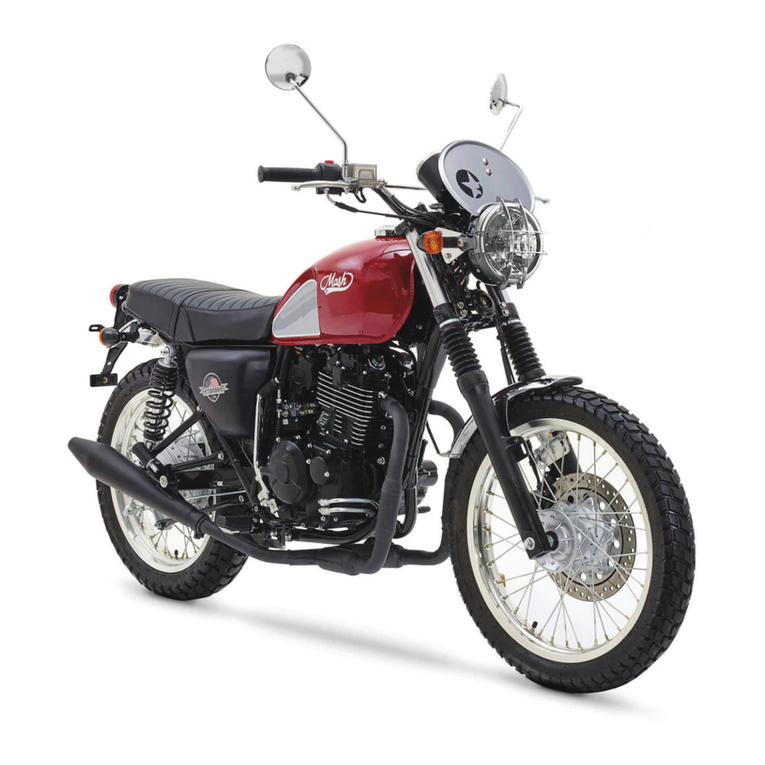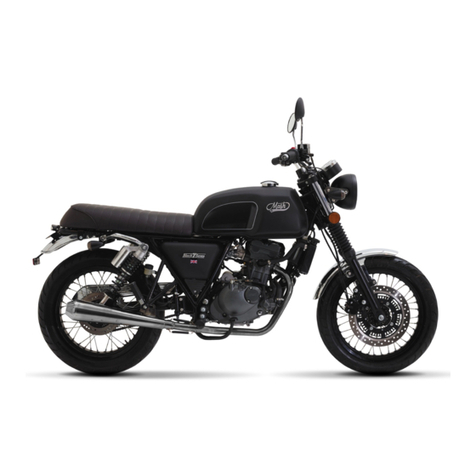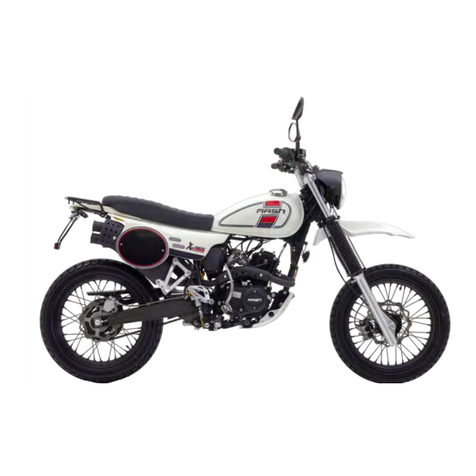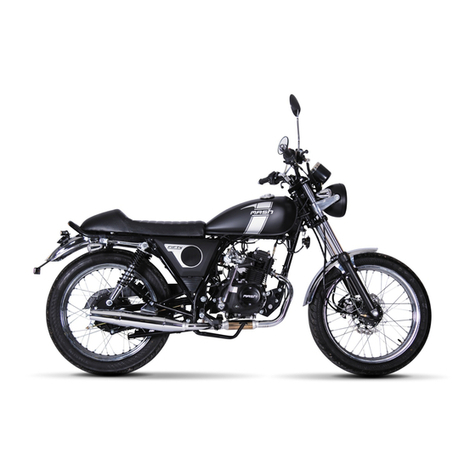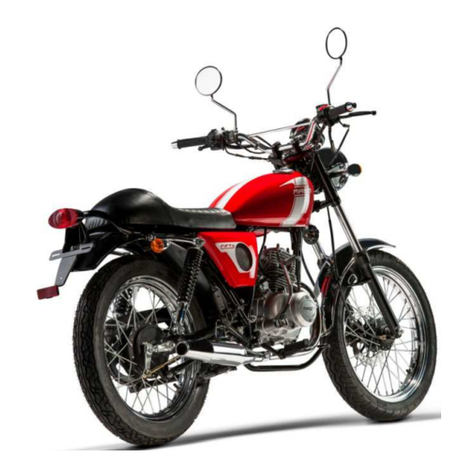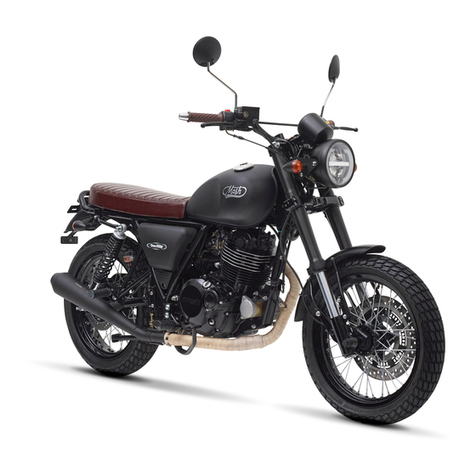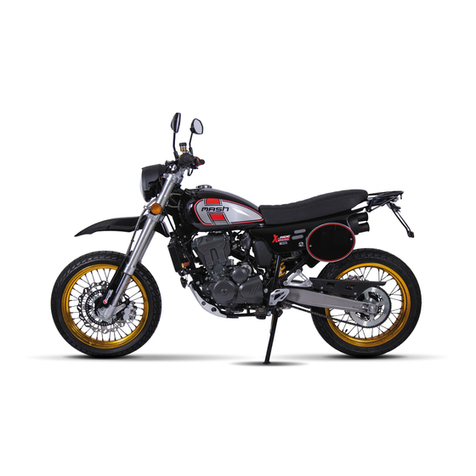Index
I、Technical Data of Main Performance…….……………………1-3
II、Safe drive……………………………………………………………4
Important safety information………….……………….………....…4
Wear protective……………………………………………………...4
Do not ride while under the influence……………………..…..…4
Safe riding principles……………………………………...………5
Being seen……………………....……………………………....….5
How to keep your motorcycle safe………………………………...6
Loading& Carrying passengers………………………………...….6
Gasoline and exhaust fumes………………….…….……..…..…..7
Modifications……………………….….......................…..…..…..7
Flue-Saving tips………………………………….….……..…..….8
III、Parts’ position……………...............................…………...…9-10
Meter reading & usage……………………………………...…11-12
IV、Switch operation…………………….....................…......…….13
Switch instruction………………………………………..….…….13
Switches on right handlebar……………………..…..………14
Switches on left handlebar...................................................14-15
Fuel filling………………………….…………………..…......15
Gear Shift …………………………...……………………….……..16
Blind spot mirrors……………………………………….….....…...16
Clutch lever…………………………………...…………….….......17
Throttle……………………………………………..……........17
Brake usage…………………………………….…………………..17
Parking lever……………………………………………………..18
Seat belt………………………………………….……………..18
Oil output tank………………………………………….…………..19
V、Basic operation and riding………………………….…………..20
Engine startin…………………………………………..…………..20
Run-in of engine……………………………………….….… 20-22
Operation………………………………………………………22-24
VI、Inspection and adjustment…………………………..……..…25
Maintenance period table………………………….……....…25
Check-up of spark plug………………………………….……..…27
Timing phase……………………………………………...……..…27
Machine oil checking……………………………….………...28-29
Valve clearance……………………………..…………………..…30
Check-up, cleaning of air filter…………………………….....…31
Idle speed……………………………..……..……………….……32
Throttle control…………………………………….………………33
Brake system……………………………………………..……34-36
Running system…………………………………………….………37
Clutch control line………………………………..............……37-38
Driving chain…………………………………………..………38-39
Battery checking……………….....................................……40-41
Replacement of Fuse……………………………….……………41
Brake lamp adjustment………………………………………..…42
Illumination signal system…………………………………..…42-43
Bolts, nuts and fasteners……………………………….………43
Vehicle washing………………………………………………43-44
Maintenance in non-use time…………………………….……44
Resumption of Service……………………………………………45
Special notice………………………………………………………45
Driving…………………………………………………………….…45
VII、Engine management system…………………….…….…46
OBD Service $01………………………………………………….50
OBD Service $02………………………………………………….51
OBD Service $03………………………………………………52-53
OBD Service $04…………………………………………………54
OBD Service $07………………………………………………….55
Service $09 (Request Vehicle Information) -PIDs supported…55
Standard torque values…………………………………………...56
VII、Electrical system diagram……….…….………………………58




